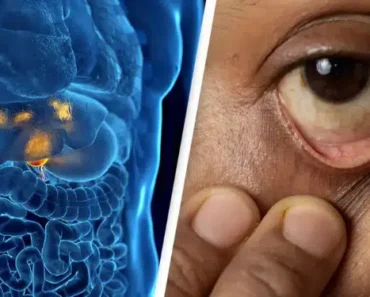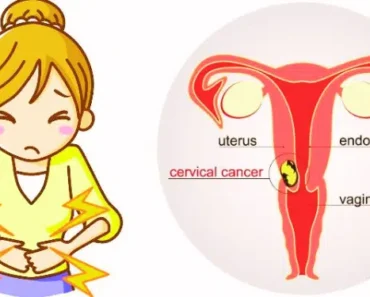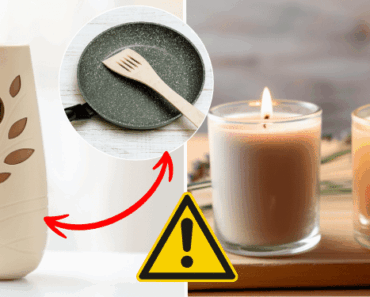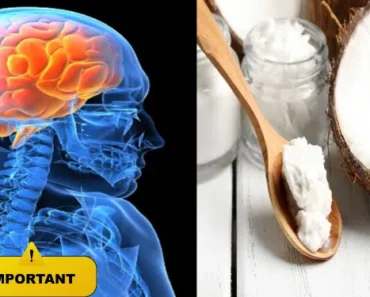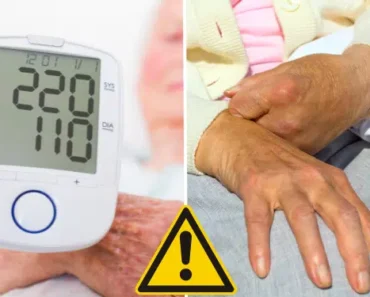Washing fresh fruits and vegetables under running water is something most of us do automatically.
But if you’re concerned about pesticide residues on your produce, you may want to take it a step further.
Research shows that a simple baking-soda solution can remove far more pesticide residue than plain water – and in some cases far outperform other home methods like vinegar water or commercial produce washes.
Why Pesticides on Produce Matter
Pesticides are widely used in modern agriculture to protect crops from insects, fungi, and weeds. Many studies show that while levels of residues on produce in stores are often below regulated safety limits, long-term exposure to low levels of pesticides is a concern. ACS Publications Chemistry Blog+2umass.edu+2
Since many people eat fruit skins and vegetable peels (where residues often accumulate), taking steps to remove surface chemicals makes sense – especially for worried consumers.
What the Research Shows: Baking Soda vs. Water vs. Vinegar
One of the key studies to know: Researchers at University of Massachusetts Amherst (led by Lili He) tested apples that were exposed to two common pesticides (a fungicide and an insecticide).
They compared three washing methods: plain tap water, a bleach solution, and a sodium bicarbonate (baking soda) solution. PubMed+1
Key findings:
- Using a baking soda solution (10 mg/mL) for about 12–15 minutes removed nearly all of the surface residues of the two tested pesticides. ACS Publications Chemistry Blog+1
- Tap water and the bleach solution removed some residues but far less effectively. PubMed
- However – and this is important – pesticides that had penetrated beneath the skin of the apple remained. The baking soda wash was most effective for surface residues.
Another review of produce-washing methods found that for leafy vegetables, the percentage reduction using sodium bicarbonate solution ranged from ~40 %–70 % depending on the pesticide and vegetable type – demonstrating that results vary widely.
How Baking Soda Compared to Vinegar & Water
- Vinegar-water or simply running water will reduce pesticide load, but not as much. For example, a food-safety review noted baking soda washes produced reductions of ~66.7–98.9% in some cases, while plain water baths achieved only ~26.7–62.9%. Epicurious
- That means: yes – baking soda is significantly better for many surface pesticide residues than just rinsing or using vinegar, though effectiveness still depends on produce type and pesticide.
So the headline “99% removal” is an upper-bound in ideal conditions (certain pesticides on certain produce).
It’s not a universal guarantee of 99% for all produce, all pesticides, all conditions – but for some key cases it did approach that.
Why Baking Soda Works so Well
Here are the mechanisms behind its effectiveness:
- Alkaline environment: Many pesticide compounds are less stable under alkaline (high pH) conditions. Baking soda is alkaline and thus helps break down certain residues. ACS Publications Chemistry Blog
- Mild abrasive / surfactant action: Baking soda crystals provide gentle scrubbing action that helps remove residues and waxes from surfaces.
- Improved physical removal: Because the residues are degraded and loosened, they are easier to rinse off after soaking.
- Food-safe and cheap: Baking soda (sodium bicarbonate) is generally safe, non-toxic and very affordable.
Limitations You Should Know
While baking soda works impressively for many surface residues, there are important caveats:
- Internalized pesticides (those which have penetrated beneath the skin or entered the flesh) are much harder to remove. The key apple study found that 20% of one pesticide and 4.4% of another had penetrated beneath the surface and were not removed by the wash.
- Not all pesticides behave the same way. Some are highly water-soluble, some are strongly lipophilic or bound into waxy skins. The effectiveness of any wash depends on the produce, the pesticide, how long since application, and so on.
- Time and concentration matter. The UMass study achieved near-complete removal only after 12–15 minutes of soaking in the baking soda solution – shorter times may produce lesser removal.
- Washing cannot replace other protective methods like buying organic produce, peeling produce where possible, or reducing overall exposure.
Practical Step-by-Step: How to Use Baking Soda to Clean Produce
Here’s a recommended routine you can follow for many fruits and vegetables, especially firm ones like apples, pears, melons, or firm-skinned vegetables:
- Fill a bowl or basin with cold or cool filtered water.
- Add baking soda at about 1 teaspoon (≈ 5 g) per 2 cups (≈ 500 mL) of water (or about 1 tablespoon per litre) – this is consistent with expert advice.
- Submerge the produce and let it soak for 10–15 minutes. While many want faster times, longer soak increases removal for tough residues.
- After soaking, gently rub or scrub the surface (especially for firm produce).
- Rinse thoroughly under running water to remove loosened residues and baking soda solution.
- Dry with a clean towel or air-dry and proceed to store or use.
Tips & Variations:
- For delicate produce (berries, mushrooms) use a shorter soak or just rinse – long soak may damage them or speed spoilage.
- Use a soft produce brush for items with waxy skins.
- If you want extra peace-of-mind, peeling produce removes surface and near-surface residues, though it also removes nutrients in the peel.
- The routine works best for firm produce; leafy greens and porous vegetables may see less removal and require other methods.
- Some sources suggest vinegar (1 part vinegar to 3 parts water) as an alternative if you don’t have baking soda – it works, but not as effectively for many pesticide residues.
Baking Soda vs. Vinegar vs. Water – Quick Comparison
| Method | Typical Removal Rate* | Comments |
|---|---|---|
| Plain running water | ~ 25-60% (varies widely) | Easy, but least effective for tough residues. |
| Vinegar-water solution | Moderate (varies) | Some effectiveness, may have taste/smell issues. |
| Baking soda solution | High in many cases (up to ~90-99% for certain residues) | Best home method for many surface residues – time and produce dependent. |
*Removal rates vary by pesticide, produce type, duration of exposure, and wash conditions.
Should You Embrace This Method? Yes (with Realistic Expectations)
If you’re looking for a better home method to reduce pesticide residue on your produce, then yes – using baking soda is a smart choice. It’s inexpensive, accessible, and supported by peer-reviewed research.
But keep in mind:
- It doesn’t guarantee 100% removal of all pesticides, especially those internalized.
- It’s more practical for firm, non-porous produce with smooth skins.
- It doesn’t replace buying organic or cleaning produce promptly after purchase to minimize residue penetration.
In other words: It’s a valuable tool in your food-safety toolkit, not a magical fix.
Modern produce washing routines often focus on plain water or fancy commercial washes – but the science tells us that baking soda (sodium bicarbonate) solutions can do significantly more for many surface pesticide residues.
A soak of 10-15 minutes in a mild baking soda solution may remove far more residue than a quick rinse or a vinegar bath.


